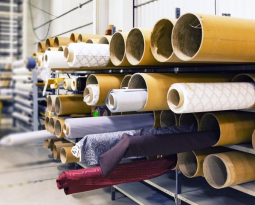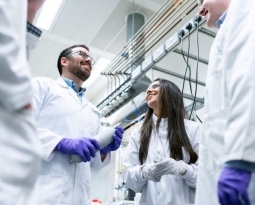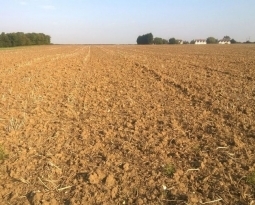Illinois Patent of the Month – September 2020
Deere & Co (John Deere) has developed a method of treating diesel exhaust emissions at different temperatures, improving the effectiveness of catalytic converters in both cold and warm weather. The development will help users meet emission regulations, and is the first time a dual temperature system has been created.
Background
It’s well known that diesel engines emit nitrogen oxides and other emissions, which contribute to the harmful effects of chemicals in the atmosphere. To limit this, emission regulations are often in place, and there are exhaust treatments to help meet them. But, these treatments are often inadequate in colder conditions.
For example, a diesel particulate filter (DPF) can be used to trap diesel particulate matter and oxidize soot. And, a selective catalytic reduction (SCR) element can be used to convert the nitrogen oxides into other compounds, such as nitrogen, water, and carbon dioxide. A selective catalytic reduction on filter (SCR+F) element combines SCR and DPF functionality.
Typically, diesel exhaust fluid (DEF) – a solution of urea and deionized water – is injected before the SCR element to provide ammonia. The nitrogen oxides and ammonia are converted into nitrogen and water. A diesel oxidation catalyst (DOC) is typically provided before a SCR and DPF or a SCR+F element. The DOC includes precious metals (e.g., platinum, palladium, etc) that act as a catalyst to reduce emission of carbon monoxide, hydrocarbons, and volatile organic compounds. The DOC also oxidizes nitrogen oxides, which promotes faster SCR reactions at exhaust temperatures above 250C.
However, at low temperatures (e.g. 200C or less), the DOC will consume nitrogen oxides by reacting them with carbon monoxide and hydrocarbons in the exhaust gas. This reduces the efficacy of SCR or SCR+F elements. The DOC also adds thermal mass to the exhaust gas treatment system, which delays warm-up of the SCR or SCR+F elements. In addition, injecting DEF into exhaust gas at low temperatures can result in urea deposits.
The Invention
Deere & Co has developed a method of treating exhaust gas, using a temperature sensor linked to the reductant producer. So, if the temperature is below the threshold one agent is injected, and if the temperature is over the threshold, another in injected. The system injects an ammonium carbamate solution into the exhaust gas during a cold temperature operating state. It injects DEF into the exhaust gas during a warm temperature operating state. The DEF is converted into additional ammonium carbamate solution in a reaction chamber during the warm temperature operating state, and stored for use when cold. This is the first dual temperature system to be developed, and because of this storage capacity, the system is also one of very few that are self-sustaining in part.
Are you developing a new product or process? Did you know your R&D experiments could be eligible for the R&D Tax Credit and you can receive up to 14% back on your expenses? Even if your development isn’t successful your work may still qualify for R&D credits (i.e. you don’t need to have a patent to qualify). To find out more, please contact a Swanson Reed R&D Specialist today or check out our free online eligibility test.
Who we are:
Swanson Reed is one of the U.S.’ largest Specialist R&D tax advisory firms. We manage all facets of the R&D tax credit program, from claim preparation and audit compliance to claim disputes.
Swanson Reed regularly hosts free webinars and provides free IRS CE and CPE credits for CPAs. For more information please visit us at www.swansonreed.com/webinars or contact your usual Swanson Reed representative.

















